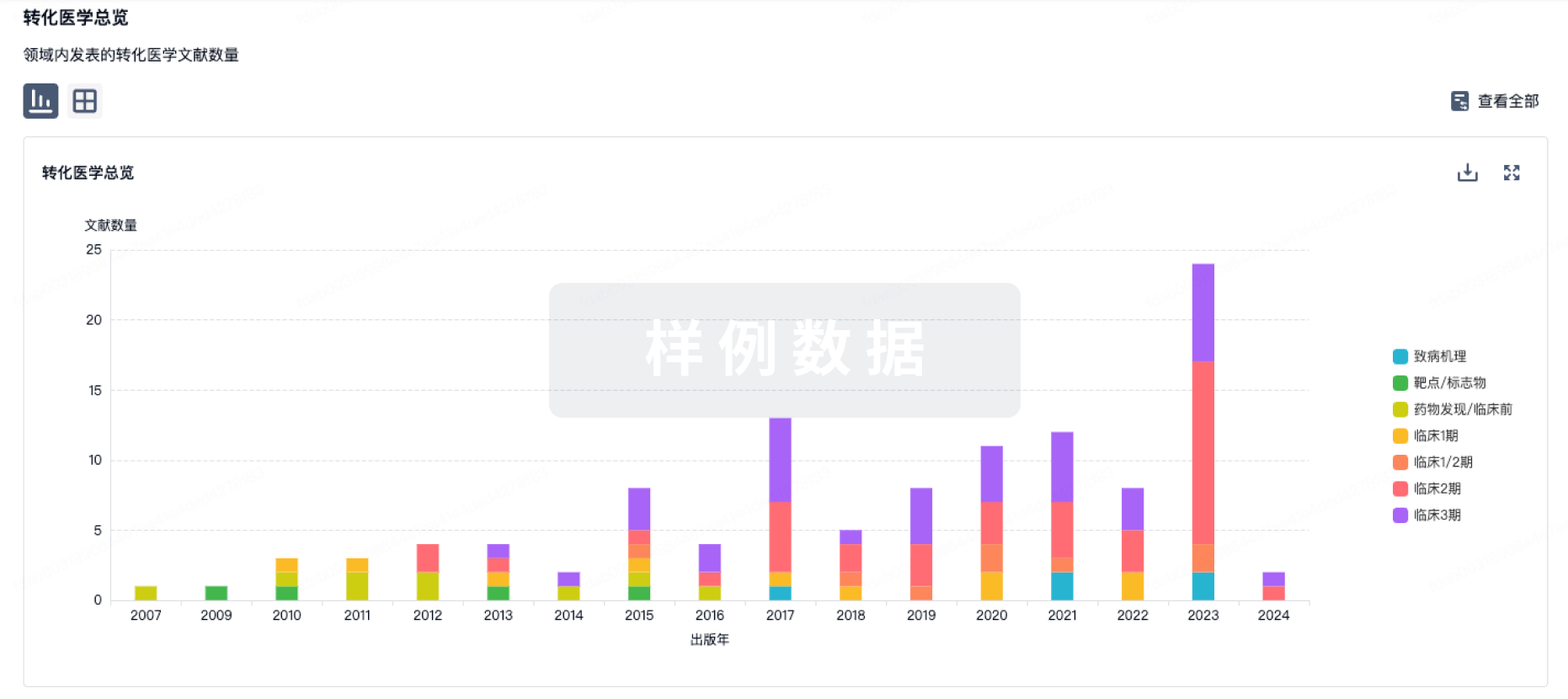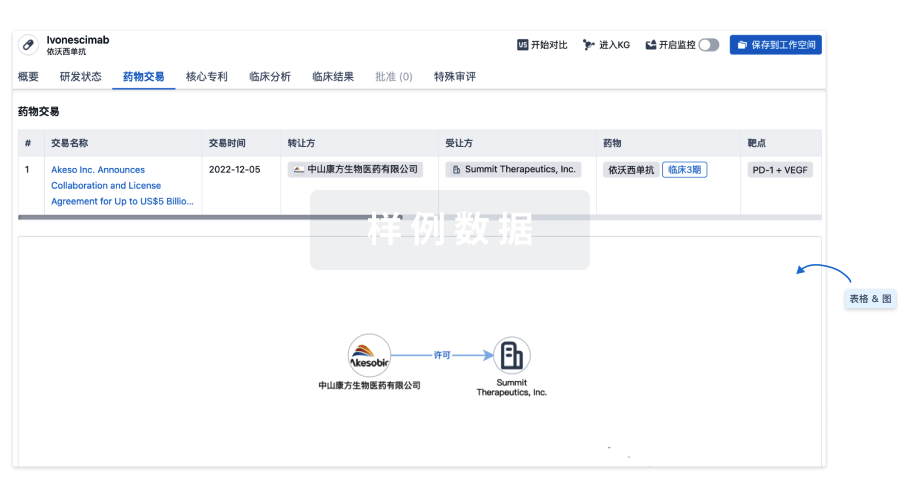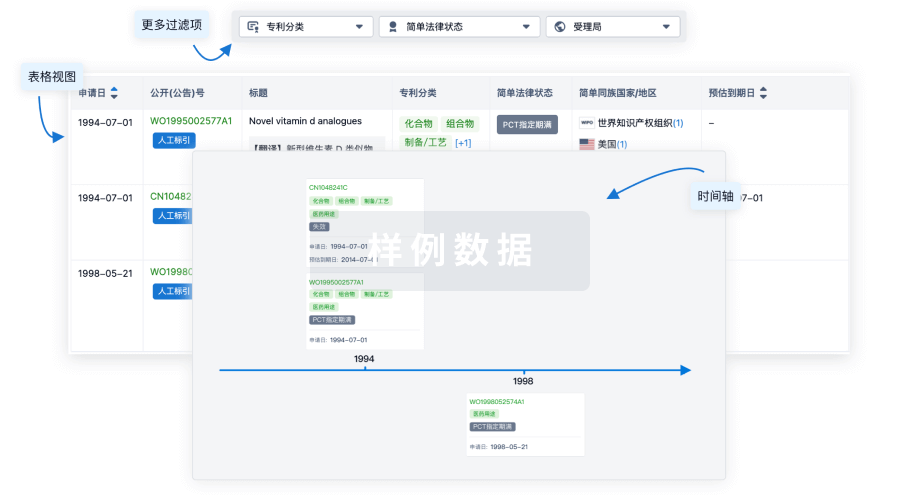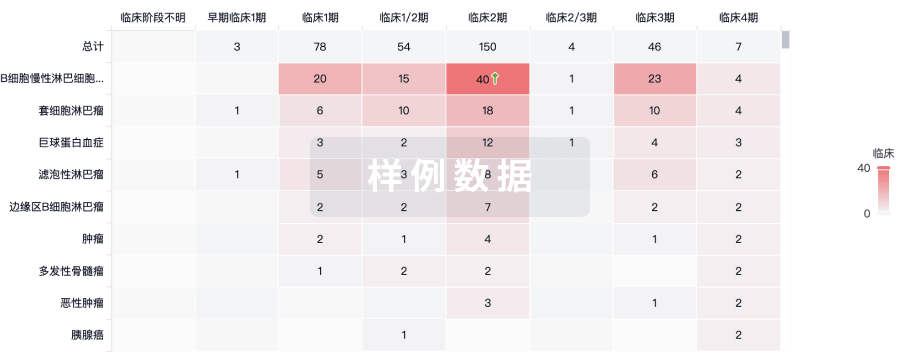预约演示
更新于:2025-08-09
AL-209
更新于:2025-08-09
概要
基本信息
在研机构- |
权益机构- |
最高研发阶段无进展临床前 |
首次获批日期- |
最高研发阶段(中国)- |
特殊审评- |
关联
6
项与 AL-209 相关的临床试验CTRI/2024/01/061163
A Clinical Study to evaluate the 8-hour moisturization potential of Multiple Saliguard Samples at concentration 3%. - NIL
开始日期2024-01-10 |
ChiCTR2000033750
A multicenter, randomized, double-blind, double-simulated, positive-controlled phase III clinical trial comparing the efficacy and safety of Salmeterol Xinafoate and Fluticasone Propionate Powder for Inhalation (SalmexTM) with Seretide in adult subjects with bronchial asthma
开始日期2020-07-01 |
申办/合作机构 |
NCT03543176
Claims-linked Survey Study to Assess Burden of Illness Among Patients Treated With LAMA/LABA vs ICS/LABA Single Inhaler Dual Therapy
The main purpose of the study is to assess the burden of illness for, COPD using both patient-reported symptom burden and claims-based economic burden, among the subjects treated with single-inhaler dual therapy treatments, Fluticasone/Salmeterol FLUT/SAL; Advair) or Umeclidinium/Vilanterol (UMEC/VI; Anoro) to support Global Initiative for Chronic Lung Disease (GOLD) category B recommendations. The study will use a health plan recruitment strategy and subject's will be recruited using Optum's health plan recruitment strategy to collect information relating to the subject's condition history, current treatment, smoking history, symptoms and symptom severity (Modified Medical Research Council Dyspnoea Scale [mMRC] and COPD Assessment Test [CAT]), and demographic and sociodemographic characteristics. A total of 2700 subject's, are planned to be enrolled in the study to reach the target evaluable sample size, n=770 subjects. Following completion of data collection, results of the survey, will be merged with claims data, covering the 12-month Baseline period for analysis. Pharmacy and medical claims data, will be used to calculate all-cause and COPD-related health care utilization and costs, treatment patterns, and Baseline clinical characteristics. The study duration is estimated to be of 12-months.
开始日期2018-05-31 |
申办/合作机构  GSK Plc GSK Plc [+1] |
100 项与 AL-209 相关的临床结果
登录后查看更多信息
100 项与 AL-209 相关的转化医学
登录后查看更多信息
100 项与 AL-209 相关的专利(医药)
登录后查看更多信息
2,354
项与 AL-209 相关的文献(医药)2025-12-01·MOLECULAR BIOLOGY REPORTS
The interaction between COX-2 and endoplasmic reticulum stress is involved in liver ischemia–reperfusion injury in mice
Article
作者: Mu, Zhidan ; Hu, Yarong ; Guo, Liping ; Tian, Xinyan ; Su, Juan ; Liang, Chen ; Chen, Mingyang
OBJECTIVE:
By establishing a mouse model of hepatic ischemia-reperfusion injury (HIRI), to investigate the effects of cyclooxygenase-2 (COX-2) and endoplasmic reticulum stress (ERS) on HIRI and their interaction in HIRI.
METHODS:
C57BL/6J male mice were divided into four groups: Sham operation group (Sham group), hepatic ischemia-reperfusion (HIR) group, hepatic ischemia-reperfusion + Salubrinal (ER stress inhibitor) pretreatment group (HIR + Sal group), hepatic ischemia-reperfusion + NS398 (inhibitor of COX-2) pretreatment group (HIR + NS398 group). The levels of Aspartate transaminase (AST) and Alanine transaminase (ALT) in serum, the activity of Super Oxide Dismutase (SOD) and the content of malondialdehyde (MDA) in liver tissue were detected. The mRNA and protein expression of Glucose-regulated protein 78 (GRP78), C/EBP homologous protein (CHOP), phosphorylated eukaryotic translation initiation factor 2α (p-eIF2α) and COX-2/PTGS (Prostaglandin-endoperoxide synthase) in liver tissue were detected. The morphological changes and apoptosis of liver tissue were observed.
RESULTS:
Compared with the Sham group, the serum ALT and AST levels of the HIR group were increased, the SOD activity in the liver tissue was decreased, the MDA content and the expression of COX-2, p-eIF2α, GRP78 and CHOP protein were increased, and the staining results showed that hepatic sinusoidal congestion, a large number of hepatocyte death, inflammatory cell infiltration and apoptotic cells were significantly increased. The levels of ALT and AST decreased after Sal or NS398 pretreatment. SOD activity was increased, MDA content, COX-2, GRP78, CHOP mRNA and protein were decreased in liver tissue, and staining showed that liver tissue injury was improved.
CONCLUSION:
In mice with HIR, COX-2 interacts with ERS to cause liver injury by regulating oxidative stress and apoptosis.
2025-11-01·THERIOGENOLOGY
Salidroside improves bovine embryo quality by mitigating oxidative stress and regulating mitochondrial lipid metabolism
Article
作者: Jia, Guan-Lin ; Yu, Xian-Feng ; Kong, Ilkeun ; Shi, Shu-Ming ; Li, Jing-Hang ; Zhang, Ming-Jun ; Chi, Zhi-Chao ; Qu, Lin-Yi ; Jin, Yong-Xun ; He, Yu-Yan ; Liu, Li-Ying ; Leng, Jia-Hui ; Lan, Tian
In vitro production techniques for bovine embryos can improve reproductive efficiency and expand quality breeding stock, but lipid metabolism disturbances during in vitro embryo culture can decrease embryo quality. Salidroside (SAL) is a glycoside extracted from the rhizome of the medicinal plant Rhodiola rosea that has antioxidant, antiaging, anti-inflammatory, and lipid metabolism-regulating effects. This study demonstrated that the addition of SAL to the culture medium of bovine embryos during in vitro culture increased the blastocyst rate and number of blastocyst cells and improved bovine blastocyst totipotency and proliferation. SAL reduced the lipid droplet content in bovine blastocysts and increased the levels of lipolysis-related genes (PNPLA2, LIPE, and MGLL). Fatty acids serve as ligands to activate PPARα and promote the transcription and expression of downstream fatty acid β-oxidation-related genes (CPT1A, CPT2, ACOX1, and ACOX2). SAL reduced the ROS level, increased the GSH level, increased the expression of antioxidant-related proteins (Nrf2 and downstream HO-1), and increased the levels of antioxidant enzyme-related genes (GPx1, SOD1, SOD2, and CAT) in bovine embryos. SAL increased the mitochondrial membrane potential and mitochondrial function, number, and distribution; facilitated mitochondria‒lipid droplet interactions; increased fatty acid availability to mitochondria; and further enhanced fatty acid β-oxidation. In conclusion, SAL not only acts as an antioxidant to reduce oxidative stress generated during in vitro bovine embryo culture but also promotes lipolysis to produce free fatty acids (FFA) to activate PPARα, enhances fatty acid β-oxidation, regulates lipid metabolism, and reduces the lipid content in blastocysts, thereby improving embryo developmental competence.
2025-10-01·EUROPEAN JOURNAL OF PHARMACOLOGY
Salidroside ameliorates monocrotaline-induced pulmonary arterial hypertension in rats by modulating BKCa channels
Article
作者: Tang, Bi ; Wang, Lei ; Chen, Qing ; Jiang, Wen-Di ; Sun, Zheng-Yu ; Lu, Guo-Qing ; Sun, Hong-Yan ; Wang, Hong-Ju ; Gao, Qin ; Kang, Pin-Fang ; Xu, Mei-Yang ; Tang, Ying ; Liu, Le-Qiang ; Chen, Zi-Yi
Salidroside (Sal) is a natural active ingredient extracted from Crassulaceae plants, which has pharmacological effects such as anti-tumor, anti-oxidation, and cardiovascular protection. Potassium channel function in pulmonary artery smooth muscle cells (PASMCs) is crucial in the development of pulmonary arterial hypertension (PAH). This study explored the effects of Sal on large-conductance calcium-activated potassium channels (BKCa) in these cells, focusing on the mechanisms underlying its protective effect in PAH. A rat model of PAH was established using monocrotaline (MCT) alongside an in vitro model of primary PASMCs stimulated by platelet-derived growth factor-BB. This study thoroughly assesses Salidroside's impact on PAH across tissue function, molecular mechanisms, and electrophysiological characteristics. Our results show that Sal treatment reduced right ventricular pressure in MCT-induced PAH rats, ameliorated pulmonary vascular remodeling and right ventricular reconstruction, and enhanced pulmonary vasoconstriction and relaxation activity. It increased the expression of BKCa channel proteins on the membrane of PASMCs, inhibited the proliferation of PASMCs, promoted their apoptosis, and improved the electrophysiological remodeling of PASMCs and pulmonary vascular remodeling caused by PAH. Activation and excessive expression of PKC α markedly suppressed BKCa channel function. Sal was able to activate BKCa channels by inhibiting PKC α, leading to enhanced K+ efflux, cellular hyperpolarization, and vasodilation. In conclusion,by reinstating BKCa channel activity in PASMCs, Sal rectified the dysregulation between cell proliferation and apoptosis within the pulmonary vasculature. This mechanism, potentially mediated indirectly by Sal's modulation of PKC α, offers a novel therapeutic approach for PAH.
100 项与 AL-209 相关的药物交易
登录后查看更多信息
研发状态
10 条进展最快的记录, 后查看更多信息
登录
| 适应症 | 最高研发状态 | 国家/地区 | 公司 | 日期 |
|---|---|---|---|---|
| 中枢神经系统疾病 | 临床前 | - | - |
登录后查看更多信息
临床结果
临床结果
适应症
分期
评价
查看全部结果
| 研究 | 分期 | 人群特征 | 评价人数 | 分组 | 结果 | 评价 | 发布日期 |
|---|
No Data | |||||||
登录后查看更多信息
转化医学
使用我们的转化医学数据加速您的研究。
登录
或

药物交易
使用我们的药物交易数据加速您的研究。
登录
或

核心专利
使用我们的核心专利数据促进您的研究。
登录
或

临床分析
紧跟全球注册中心的最新临床试验。
登录
或

批准
利用最新的监管批准信息加速您的研究。
登录
或

特殊审评
只需点击几下即可了解关键药物信息。
登录
或

Eureka LS:
全新生物医药AI Agent 覆盖科研全链路,让突破性发现快人一步
立即开始免费试用!
智慧芽新药情报库是智慧芽专为生命科学人士构建的基于AI的创新药情报平台,助您全方位提升您的研发与决策效率。
立即开始数据试用!
智慧芽新药库数据也通过智慧芽数据服务平台,以API或者数据包形式对外开放,助您更加充分利用智慧芽新药情报信息。
生物序列数据库
生物药研发创新
免费使用
化学结构数据库
小分子化药研发创新
免费使用

